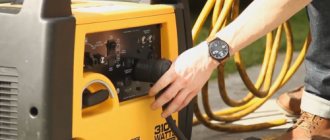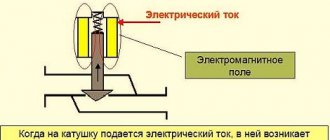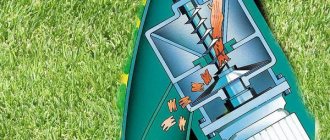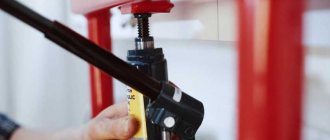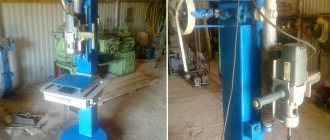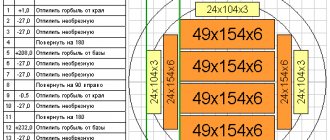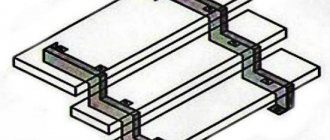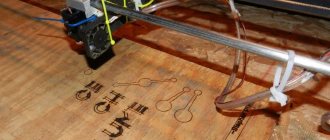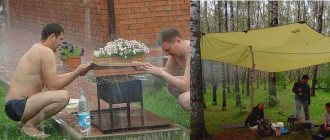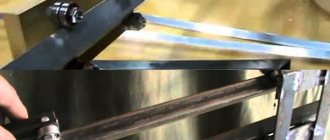Types and characteristics of vibrating plates
Main characteristics of vibrating plates:
- engine type and power;
- weight;
- vibration force;
- working surface size.
By engine type and fuel type
Vibrating plates are divided into:
- gasoline
, running on gasoline. Used for compaction in field conditions and in open areas. - diesel
, running on diesel fuel. This is a powerful technique for work on an industrial scale. - electric
, operating from an alternating current source. Used in basements, places with increased fire hazard, etc.
The most popular are gasoline vibrating plates
.
Vibrating plates with an internal combustion engine have high power and can operate autonomously, but due to the exhaust emissions, such equipment cannot be used indoors. The disadvantage of a diesel vibrating plate
is its price;
the disadvantage of an electric
plate is the limited length of the electrical cord or the impossibility of performing work in the absence of a power source. However, with the same characteristics, an electric vibrating plate will cost an order of magnitude cheaper than a vibrating plate with a gasoline or diesel engine, and it is also lighter and has a low noise level.
It should be noted that gasoline vibrating plates with hydraulic drive
Vibrating plates with a mechanical drive are much more reliable and durable.
By weight
Vibrating plates are divided into:
- light (up to 75 kg);
- universal (from 75 to 90 kg);
- medium-heavy (from 90 to 140 kg);
- heavy (from 140 kg).
The effectiveness of using a vibrating plate depends 70% on the correct selection of its weight. The remaining 30% is determined by vibration force, surface size and motor type.
Light vibrating plates
Perfect for minor road repairs and landscaping work, compacting fine soils up to 15 cm thick, and laying paving slabs.
Universal vibrating plates
used for landscape work, patching asphalt road surfaces, repairing road surfaces after laying utility lines, and for compacting soil up to 25 cm thick.
Medium-heavy
and
heavy vibrating plates
are used for compacting the bases of roads under construction, compacting the backfill of trenches around the perimeter of the foundation, for repairing asphalt road surfaces, and compacting soil with a thickness of 25 to 60 cm.
Vibration force (impact force)
– an indicator of the power of shocks transmitted from the vibrator to the plate. The higher this indicator, the denser materials it can compact. For example, for compacting asphalt, it is recommended to purchase models with a vibration force of approximately 15 kN, and for laying paving slabs, a model with an impact force of 10 kN is sufficient.
Engine power
determines the ability to move on a viscous, downhill surface. During operation, the vibrating plate itself pulls itself forward; if the power indicator is low, the plate will sink into the ground and bury itself on slopes. Those. The greater the engine power of the vibrating plate, the better it will cope with its task and the less effort the operator will make for this.
By way of movement
Vibrating plates are divided into:
- forward (or non-reversible), in which movement is carried out only in one direction - forward;
- reversible - can move both forward and backward.
The main advantage of a reversible vibrating plate is that it has a reverse motion, and there is no need to turn it around. This convenience reduces the time required to complete the work and the physical costs involved. Reversible models are indispensable when performing compaction work in difficult to pass places, in limited areas, in trenches, pits, foundations of low-rise buildings, where it is impossible to turn around.
Depth of compaction (impact on material)
for a vibrating plate varies on average from 15 to 40 cm. Although many manufacturers indicate the exact compaction depth for their vibrating plates, you should not trust this parameter. It greatly depends not only on the specific model, but also on the working conditions, as well as on the material that you are going to compact. When selecting a vibrating plate for different types of work, it is better to focus on its weight and impact force.
Vibrating plate performance
– this is the area of the processed space per unit of time, it can range from 100 to 900 sq.m per hour.
Purpose of vibrating plates
A similar mechanism is used for compacting crumbly areas of earth and building materials, as well as uncured surfaces of asphalt and concrete. It is especially effective in small areas and sidewalks, as well as where heavy equipment cannot enter.
The use of this device will greatly facilitate manual labor in homestead or country landscape construction. The easiest way to compact the soil on a garden path or a small parking lot near a house is by mechanized method.
The tamping vibrodynamics will also help out during excavation work on laying underground communications, when you need to compact the soil at the bottom of the trench.
This device operates due to vibrations that occur during the rotation of a flywheel mounted on eccentrics:
- By displacing the ballast through the drive, the vibration created is transmitted to the iron base - the sole.
- The heavier it is, the stronger the oscillatory process and the denser the compaction.
A similar device is used in vibrating platforms at factories for the production of reinforced concrete products and vibrating tumblers for cleaning various objects from burrs, scale and other defects.
Making a vibrating plate with your own hands
The process of making a vibrating plate with your own hands and designing it yourself is quite simple, since the mechanism is not complex in its design.
The vibrating plate consists of the following elements:
- motor - selected at your discretion, for example, you can use the IV-98E platform unit, which runs on a 220-volt network, or a single-cylinder gasoline unit. Preferably made by Honda;
- base platform - sheet metal, 45 by 80 in size and 8 millimeters thick;
- channel - two pieces;
- elastic soft cushions that are needed to attach the handle to the vibrating plate - 2 pieces;
- M12 bolts for fastening a gasoline or M10 for an electric motor;
- plastic wheels to facilitate construction - 2 pieces;
- pipe;
- The pipe is hollow, approximately 1.2 meters long.
Having purchased the necessary materials, proceed to assembly; you do not need a drawing.
- Remove the cover on the electric motor to adjust the vibration strength.
- Make a cut on a sheet of metal with a grinder. From the edge of the sheet - 100 mm, depth - approximately 5 mm. It is necessary to make two symmetrical cuts on both sides.
- Using a hammer, bend the edges along the cuts, the bend angle is approximately 25 degrees. This is necessary to ensure that the unit does not bury itself during operation.
- The places where the cuts are made must be welded and the position of the ends must be fixed.
- The vibrator, made by hand, is mounted on the stove using two channels. They must be adjusted so that the edges do not extend beyond the edge of the working surface. The channels are carefully welded.
- M12 or M10 bolts secure the vibrator itself to the metal. It is necessary to measure the distance between the motor mounting holes, drill holes in the channels at the same distance, and secure the motor to the base by hand using prepared bolts.
- A pipe and elastic pads are necessary to dampen vibration and make the handle of the unit itself.
Where to begin?
If you decide to make an engraving machine with your own hands, we recommend that you immediately design a CNC device. This will significantly increase the performance of the device and make it easier to work with. After this, decide on the layout of the device. As a basis, you can take an old mini-drilling machine and replace the drill in it with the cutter itself.
We further recommend that you adhere to the following instructions:
Select a mechanism that will be responsible for moving the working unit along planes. For these purposes, you can use carriages from an old printer. In addition, a device designed in this way will make it relatively easy to connect a digital node. It is worth noting that the carriages are best taken from large printers. This will significantly strengthen the design of the machine. Equip your machine with a powerful stepper motor
For this purpose, we recommend using old electric motors. Pay special attention to the milling unit. To carry out transmission from the engine to the working unit, it is best to use a toothed belt drive.
Cleaning the Flash Arrestor
The engine exhaust system also needs to be serviced periodically. A long-term lack of maintenance can lead to burnout of the muffler, which will greatly deteriorate the performance characteristics of the vibrating plate.
Here are basic repair procedures that require a minimum of tools and can be performed outside of a service workshop.
Source
Preparing the site for construction work
First, the work site is laid out: wooden pegs are driven in and “red marks” are set. Builders use this term to call a stretched string that marks the boundaries of the planned height of the site. Take regular twine, tie it to pegs and tie it to the pegs at the height where you plan to finish laying the tiles. Be sure to slope the thread by about 5 degrees towards future water intakes.
Next, you need to check how much free space there is from the ground to the threads. If it is less than 30 centimeters, remove all excess with a shovel and remove it as far as possible so as not to interfere. If the soil is fertile, it can be poured into the garden or in places where you plan to make flower beds.
The edges of the prepared earthen “trough” must be immediately secured with curbs. Sometimes craftsmen install curbs after pouring concrete. In this case, the edge of the site will have to be protected from soil shedding and formwork installed. We recommend that inexperienced bridge builders give preference to the first option.
If you plan to use a border with a height of 50 centimeters, then:
- a trench is dug another 30 centimeters deep;
- a 10-centimeter layer of crushed stone is poured;
- 1.5 centimeters of cement mortar is placed;
- a curb is installed on it, after laying which, the upper edge of the tile is 2 centimeters higher than the edge of the curb. This is necessary so that the curb does not retain water on the site and facilitates its removal.
Application of Atlas Copco vibrating plate
Atlas Copco vibrating plates are used for road construction, compacting deep soil and asphalt, equipping playgrounds and parking lots, compacting paving slabs and paths.
Atlas Copco equipment is popular in the construction industry. Among the models of this global brand, you can choose a unit for various types of work. The range is represented by machines weighing from 54 to 141 kilograms for compacting soil and asphalt. Atlas Copco petrol and diesel vibratory rammers with manual and remote control are highly productive, mobile and compact machines.
What is a vibrating plate?
Why do you need a vibrating plate?
The processes of compacting various loose bases are integral to construction work. For example, crushed stone, sand, soil and other similar materials.
Basically, these are the stages of preparation for pouring concrete, asphalt, laying tiles or building a foundation.
In order to mechanize the compaction process, so-called vibrating plates are used. The mechanism of their action is quite simple.
The device creates vibrations under the action of which small particles of the compacting layer are knocked as close to each other as possible, excess air is displaced and at the finish a flat base of the required density is obtained.
Buying such a car for yourself is quite unprofitable. A homemade vibrating plate will cost much more profitably.
Structural structure of the mechanism
A vibrator is mounted on a weighty platform, and a motor is installed above it. The last two nodes are connected by a coupling and a V-belt drive.
The rotational movements of the engine are converted into oscillatory movements using a vibrator and transmitted to a heavy platform, which in turn acts on the compacted surface.
The device's reverse function makes it possible to perform work in narrow trenches and pits.
The stove itself is made of steel or cast iron, preferably of good quality. Otherwise, the service life of the device is significantly reduced, and cracks appear on the surface of the base.
The size of the working surface of the slab affects the pressure exerted by the mechanism on the compacted layer. A slab with a smaller area compacts the soil better.
The density of the finishing layer depends on the vibration force. The higher it is, the better the material is compacted.
Vibrating plate configuration options
Nutrition classification
- electrical,
- diesel and
- gasoline vibrating plate.
Electric. Electric is considered the most economical. This is exactly what they recommend collecting with your own hands for your own household.
Moreover, in terms of technical characteristics, vibrating plates with an electric motor are in no way inferior to their competitors. The only downside is the condition of having an accessible electrical network.
Gasoline. It will cost more than electric ones, but cheaper than diesel ones.
However, it will be more profitable to buy fuel for diesel engines, although the engine itself will be the most expensive of the three described.
Also, its disadvantage will be high noise, which reduces comfort at work.
The power of the installed motor must be sufficient to operate a heavy slab. Otherwise, the latter will load in bulk material.
Classification by weight
Highlight:
- Lightweight slabs. Weighing 75 kg. For processing layers up to 15 cm thick. Such slabs are used for landscaping work, laying paving slabs, and damping polyurethane mats.
- Universal plates. Their weight ranges from 75 to 90 kg. The maximum layer to be treated is 25 cm. They are used for landscape work, repair of road surfaces, including patching on asphalt.
- Medium-heavy. Weight 90-140 kg. The thickness of the treated layer is up to 60 cm. Application - laying road surfaces in layers, backfilling trenches along the perimeter of the foundation.
Classification by direction of movement
According to the direction of movement during the compaction process, vibrating plates can be straight or reverse.
Straight lines can only move forward, and if a second pass over the compacted layer is necessary, such a machine will have to be turned around. And this, albeit small, is still a waste of time.
Reversible vibrating plates can move both forward and backward. They give higher performance. Typically, devices with slabs weighing more than 100 kg are equipped with reverse.
Additions to the package
An additional advantage would be if the vibrating plate is equipped with an irrigation system.
It protects the unit from sticking to the compacted surface. They should carefully protect the engine from water.
This way, small particles of bulk materials will not clog into the mechanism, and the machine itself will last much longer.
Device selection criteria
Several conditions influence the quality of work. To obtain an excellent result, it is necessary to take into account all the properties of the model and select a site compactor, focusing on the tasks facing the unit.
Characteristics by mass
This is the main quality of a vibrator for compacting any surface, which affects the effectiveness of the task. You need to pay special attention to this when purchasing or making a homemade vibrating plate. A self-assembled device often has a bias towards one feature, so it is necessary to understand all the characteristics of the mechanism.
The weight of vibratory ramming devices is distributed as follows:
- Lightweight models weighing up to 75 kilograms are suitable for working on surfaces with a small (up to 15 centimeters) soil layer thickness: paths in the garden, local areas for laying tiles or rugs.
- Medium ones with a draft thickness of up to 25 cm are quite versatile. They can cope with light work with equal efficiency and help with laying asphalt and paving slabs. Their weight is in the range of 75–90 kg.
- At a construction site, when pouring the foundation and strengthening the bottom of communication ditches, as well as laying several layers of asphalt pavement, medium-heavy vibrating machines weighing up to 140 kilograms and a compaction depth of up to 60 centimeters are useful.
- Heavy slabs perform the same work as the previous ones and weigh more than 140 kg.
Creating a sand-cement cushion
Follow this procedure:
- We sift the sand and mix it with cement in a ratio of 6 to 1. This is easiest to do in a concrete mixer.
- We fill the area with a 10-centimeter layer (taking into account the thickness of the tiles). This means that the thickness of the tile + the thickness of the pillow should be 2 centimeters above the red mark (shrinkage cap).
- Using a vibrating plate or a stomp (a shelf with a nailed wide board and a pile plank) we tamp the entire area.
- Check the tension of the red marks and the presence of slope.
- We lay out beacons (pipes with a diameter of 20 millimeters) around the site. They should be pressed firmly onto the pillow. The distance from the lace to the beacon should be the same as the thickness of your tile, plus 1 centimeter for compaction.
- Now we take the trapezoidal rule and, focusing on the beacons, we tighten the excess part of the sand-cement cushion to obtain a perfectly flat surface.
- We take out the first beacons, on the side where you will start laying the tiles. Fill the grooves with the same mixture and begin laying the tiles.
What does a vibrating plate consist of?
Before you start making a vibrating plate with your own hands, you need to draw up a drawing of it. To do this, you need to know what parts the equipment consists of.
Any modern vibrating plate consists of several elements:
- Working plate.
- Frame.
- Vibrator unit.
- Engine.
- Transmission.
- Suspension system.
- Control mechanism.
The work plate is made mainly of cast iron, and its characteristics are determined by the quality of this material.
Low quality cast iron may develop cracks when working with sand and gravel mixtures.
These types of soil contain small stones, which, during compaction, specifically impact the surface of the slab.
The dimensions of the work surface are also important. When the slab has the correct geometry, its platform is able to self-clean without leaving soil residues.
The smaller the surface of the working plate, the better the soil will be compacted.
Therefore, when making a vibrating plate with your own hands, it is better to make a smaller surface area if this does not reduce the vibration properties.
The vibration unit is attached to the slab, so all connections and fastening points must be assembled especially carefully.
All parts must be made of high quality and durable materials. A high vibration rate and a certain mass of the product determine the level of impact on the ground.
The vibration unit seal must prevent the leakage of lubricating fluid, prevent the entry of dust and dirt, and also withstand long-term loads.
The vibrating unit is driven by energy transfer from an electric motor.
For better performance, vibration machines use an internal combustion engine, which has maximum power and performs compaction in any conditions.
The main malfunctions of a gas generator and their causes.
Gasoline generator engine malfunctions
The gas generator does not start, or starts but stalls. This is a fairly common problem. Several factors influence this: spark, fuel supply, gas distribution mechanism, major mechanical damage (such as a hole in the crankcase or a broken connecting rod). There may be no spark due to a burnt coil, cap or spark plug. It is also possible that the sensor relay or oil sensor may fail (cuts off the spark when the oil level is low), and faulty wiring components are also possible. The fuel supply is disrupted, the fuel system (carburetor, tap, filter, gas tank) is clogged, system elements (carburetor, tap, fuel pump) are faulty. Long downtime of equipment is detrimental to the fuel system. The timing belt is responsible for gas distribution; large gaps and carbon deposits on the valves prevent the engine from working efficiently and sometimes even starting.
The engine is smoking. The main reason is the exhaustion of the piston group; oil from the crankcase enters the combustion chamber (the piston and cylinder are worn out). Too much oil also produces smoke.
The engine is knocking. Production of crankshaft, connecting rod, bearings.
Engine wedge. Also due to oil starvation there is strong production and carbon deposits in the combustion chamber.
Gasoline in the crankcase. Gasoline and oil are leaking from the crankcase. The carburetor is faulty, most likely the needle does not hold. Causes include wear or dirt in the carburetor.
Malfunctions of the electrical part of the gas generator
The gas generator does not produce current. The engine starts normally, but there is no current. The reasons are trivial: the AVR burned out (the generator does not excite), faulty diodes, problems with electrical wiring, problems in the stator or rotor, and also individual modules fail (on some generators). On inverter generators, the main fault is the inverter board.
The gas generator produces current, but the current is too strong or too weak, or the connected devices burn. There are two reasons: the engine does not operate at 3000 rpm (3000 rpm).
220 volts), faulty electronic components (automatic transfer switch, inverter board, capacitors, diodes)
When connecting devices, the engine stalls or does not turn on - again there is a problem with the engine. Something is clogged or not adjusted.
The fight for silence with the help of vibration speakers.
VIDEO ON THE TOPIC: VIBRATION-ACOUSTIC SPEAKER / VIBRATION-SPEAKER WITH YOUR HANDS The situation is standard - neighbors above. But since they did not lead a nocturnal lifestyle and rarely “stayed up” until night, sometimes even their small child ran around until one in the morning, this did not bother us too much. But a year ago, a new owner moved in, who leads a nocturnal lifestyle, gathers a group of friends about once a week and hangs out with them until the night. We hear everything, stomping, grinding furniture, falling objects. Human laughter and music can also be heard, but this is not as disturbing as the sounds from the floor. This neighbor, even without the company of friends, carrying out his nocturnal lifestyle, periodically disturbs our sleep with his “sexual” sounds.
The site helps you find something interesting in a huge range of stores and make a successful purchase. If you bought something useful, please share the information with others.
Operating principle and characteristics of the device
The device of a vibrating plate is quite simple. A vibrator is installed on a heavy platform, on top of which the engine is located. The motor and vibrator are connected using a coupling and a V-belt drive.
Thus, the engine creates rotational movements, which it transmits to the vibrator, which converts them into oscillatory ones.
These movements are transmitted to the slab, and then to the material that is compacted; the particles begin to move and fill all the voids in the embankment.
The result is a very dense, even coating. If the vibrating plate has a reverse motion, this allows you to work in trenches and narrow pits.
The work plate can be steel or cast iron. Its characteristics depend on the quality of the material from which it is made. If the cast iron is of low quality, then when working on sand and gravel, the slab may become cracked.
The vibration force determines how tightly the surface will be compacted. With the same mass, a vibrating plate with a higher vibration force will compact the surface better. Therefore, for denser surfaces, you should choose a mechanism with the highest rating.
Machines with a rating below 10 kN are not suitable for compacting asphalt. To lay paving slabs, vibrating plates weighing from 75 to 90 kg should not have a vibration force exceeding 18-20 kN, otherwise the tile will be pressed into the base and may even collapse.
Its main disadvantage is the presence of an electrical network. This range is limited by the location of the electric current source and the length of the cord. The gasoline engine is easy to use.
Engine power affects the movement of the vibrating plate. The higher this parameter, the easier it is to work with the stove. The plate with a powerful motor moves itself. If the power is insufficient, the slab may bury itself in the ground, especially downhill.
The main parameter of a vibrating plate is its weight; this is what you need to pay attention to when choosing the right model and selecting components to make it yourself. According to this parameter, models are divided into four classes:
| Class | Weight, kg | Maximum surface layer, cm | Application |
| Lungs | 75 | 15 | Landscaping work, compacting paving slabs, laying damping polyurethane mats |
| Universal | 75-90 | 25 | Landscaping works, road surface repairs and asphalt patching |
| Medium-heavy | 90-140 | 60 | Laying layers of road surface, filling trenches around the foundation |
| Heavy | 140 and above |
Vibrating plates differ in the direction of movement during compaction. They can be direct or reverse. Straight lines only move forward. If re-compaction is necessary, then you need to turn around and repeat the compaction, which leads to significant time costs.
Reverse motion makes it possible to reverse, therefore increasing the quality of vibratory compaction and reducing operating time. Reverse is used on slabs weighing at least 100 kg.
A useful feature for a vibrating plate is the presence of an irrigation system. Without it, the slab may stick to the ground, especially asphalt. The only thing you need to do is make sure that water does not get on the engine.
To extend the service life of the mechanism, the belts and coupling must be protected with a special casing. If there is a casing, particles of the compacted surface will not get into the mechanism, which will prevent machine breakdown.
Watch our video collection on the topic:
Main components of the vibrating plate design
Before you make a vibrating plate on your own in a garage, you will need to prepare a diagram or even draw up drawings to scale to simplify further assembly. The main components in the design are the following parts:
- frame frame;
- base metal platform;
- electric motor;
- transmission system;
- suspension;
- management block.
The base plate is selected from a thick-walled steel sheet or ductile cast iron so that there is no destruction of the material during operation. This is facilitated by the relative viscosity of the metal and minimal fragility. It is strictly forbidden to assemble cast iron of questionable quality with a large number of cracks or casting cavities. When working with sand and gravel mixtures, it will be destroyed by external influences.
The thickest sheet metal will be needed to make the base and weight for the eccentric
It is important to initially have the correct geometric dimensions of the base, since if you make a vibrating plate with your own hands in accordance with this rule, the site will self-clean from soil adhesion. The area is also selected optimally, without unreasonable increase. A small working surface contributes to high-quality compaction of the site.
Popular drawings demonstrate a fairly simple design of a homemade vibrating plate with an electric motor. According to the kinematic diagram, a vibrator is based on the platform, and an electric motor is mounted above it. To connect these elements together, a V-belt drive or coupling is provided. In fact, the motor provides rotation, transmitted to the vibrator, and it further forms the oscillatory process.
Scheme of the simplest vibrating plate design
The resulting energy is transferred to the slab, and from it passes to the compacted soil. During compaction for laying paving slabs or for other purposes, particles of material fill the voids in the embankment. The result is a dense, even coating.
Types of vibrating plates used
Homemade designs require the presence of a power plant that provides the main work. Three types of motors are often used:
Diesel engines are appropriate when a lot of effort is constantly required. In everyday conditions they are hardly justified. Although it is not uncommon to find a vibrating plate made from a walk-behind tractor with an installed two-stroke engine.
Devices with a gasoline engine, like previous designs, are autonomous, but extremely noisy in operation. An economical engine with a power of several watts is selected for them.
Recommended engine power is 1.5-2 kW at 4000-5000 rpm. Less power will not provide the required shaft rotation speed, and accordingly, the vibration force will be insufficient
The optimal solution for many is a self-assembled electric vibrating plate. It is enough to connect electricity to the place of work on the site and you can start compacting the soil. A positive factor is the absence of exhaust gases during the process.
According to classification, it is customary to divide products into several groups:
- light – weight less than 70 kg;
- universal – up to 90 kg;
- medium weight – 90-140 kg;
- heavy group – more than 140 kg.
The first group is appropriate for processing the local area, where a layer of no more than 15 cm is expected to be pressed. The universal one is relevant for processing 25 cm. Heavier devices are designed for 50-60 cm.
The larger the compacted layer, the heavier the machine should be
It is important to correctly select the electric motor for the vibrating plate. After all, a too weak model on a massive slab will sink into the layers of soil. The optimal ratio is considered to be 5 hp per 100 kg of mass. or 3.7 kW.
Preparing the necessary kit
To make a vibrating plate at home or in a garage, you do not need to look for any rare or expensive parts. In the process, the following tools will be in demand:
- welding machine and a pack of electrodes 3 mm in diameter;
- half a kilo hammer;
- angle grinder with metal discs;
- set of wrenches and screwdrivers.
The components for the device will include the following set:
- An area motor with the ability to be connected to a 220 V household power supply. A new vibrator for a vibrating plate will be quite expensive, so it is recommended to purchase Soviet devices at disassembly sites or radio markets. Sometimes craftsmen even install motors from old washing machines, but the disadvantage of this method is the lack of vibration control.
- Sheet metal 8-10 mm thick. The area is selected taking into account the fact that the edges will bend. The optimal parameter for domestic conditions is 50x80 cm plus allowance for bending. You can find the sheet on metal plates.
- A pair of 80 mm channels or pieces of a building profile that will be welded across the structure. They are needed to mount and hold the electric motor.
- Metal pipe with a diameter of 20 mm. Its length is calculated based on the user's height. The optimal handle for average height is 120 cm, so you will need about 3 m of workpiece.
- A set of hardware for mounting the motor, including M10-M12 bolts, nuts for them, and always locking washers to minimize the influence of vibration.
The degree of influence of vibration on the operator can be reduced with the help of built-in additional devices. Often, automotive suspension elements are used for this. Without them, everything will also work, but the operator will get tired faster.
VIDEO: Making a vibrating plate with your own hands, step by step, with errors and their solutions
Step-by-step algorithm for assembling a vibrating plate with your own hands
At the initial stage, a base platform is prepared from a metal sheet using a grinder and a welding machine. We measure 10 cm from the front and back edges and cut the angle grinder to half the sheet thickness of 4-5 mm. Using a hammer or mallet, we bend the workpiece along this line by about 30-40 degrees. Such a slide will reduce the likelihood of the platform burying in the ground, and will also allow you to move the installation in the desired direction.
The cuts should be strengthened by welding. Using electrodes, we form an internal stiffening rib that fixes the bend in the desired position. We position the channels across the stroke so that their approximate axis corresponds to the distance of the engine mounts. We weld the strips to the inner surface.
There are two ways to mount the motor. In the first case, drilled holes are used in the channel to thread bolts through them. In the second case, the bolts are welded to the channels and the engine is placed on top. This method is considered more reliable, however, it requires very strict adherence to center distances.
Read also: GOST for a mechanic's hammer
When installing the electric motor on the site, it is worth knowing that the Soviet IV-98 models have an internal eccentric for the vibrating plate. It can be adjusted to the optimal vibration strength parameters. We tighten the nuts, having first placed the bushings under them.
The crucial step is attaching the handle. To dampen vibration on it, silent blocks from domestic or foreign cars are useful. We weld the L-shaped elements to the bent part of the platform. We put rubber elements on them, through which the handle will be connected.
At home, it is possible to assemble a model weighing 40-50 kg. This is enough to compact 10-12 cm of soil.
When operating a homemade machine for a long time, individual parts of the electrical circuit may overheat, so it is necessary to use an RCD.
VIDEO: How the Germans prepare a site for laying paving slabs and paving stones
In early spring, when the temperature rises above zero, summer cottages and garden plots begin to come to life. Some are engaged in gardening work and preparing for planting, while others have started renovations or construction. As a rule, it is impossible to do without excavation work: either compact the path under the tiles, or strengthen the bottom of the ditch. This is where a vibrating plate made with your own hands and according to your own drawing will come to the rescue.
How to assemble a vibrating plate yourself
Materials
- Sheet of steel measuring 50x80cm and thickness 8 mm;
- An area vibrator and an electric motor for it, for example IV-98E. Some craftsmen build vibrating plates with a washing machine motor
- Two pieces of channel up to 45cm long;
- M10 and M12 bolts with nuts and washers;
- Metal pipes 1.5 m long and 20-25 mm in diameter;
- Shock absorbers.
Tool
- Welding machine,
- hammer,
- grinder with cutting wheels,
- drill and a set of metal drills for it,
- set of wrenches,
- tape measure and marker.
Step-by-step instructions for assembling a vibrating plate
- On the steel sheet, cuts are made on both sides approximately 5 mm deep, this is enough to bend the sheet. Moreover, the incision should be 10 cm from the front, and 5 cm from the back.
- Bend the edges of the sheet at an angle of 20-30 degrees, and weld the bend points.
- The prepared channels are welded parallel to the bent edges. The distance from the center line of the sheet to the channels is about 5-10 cm.
- A vibrator is mounted in the center of the channels, securing its legs using an electric drill and bolts with nuts and washers;
- Shock-absorbing cushions are attached to the slab;
- A U-shaped handle is formed from the pipe, at the edges of which holes for bolts are drilled;
- Using metal corners, the handle is secured to the sole through shock absorbers;
- Connect the power cable and provide start-up protection.
A vibrating plate made in this way will have a mass of about 60 kg. For ease of transportation, you can add an axle with wheels to it.
Before starting the structure for the first time, check all its components for secure fastening or absence. damage and chips. Keep it clean and your homemade vibrating plate will last a very long time.
If you have chosen a gasoline engine for the mechanism, you will have to clean the spark plugs more often, check the oil level, and change filters.
The first time the oil should be changed after 25 hours of operation, after which it can be done after 80-100 hours. It is better to fill the oil with the engine warm but turned off.
By making a vibrating plate with your own hands, you can save up to 10,000 rubles.
Source
Electric motor repair
Before checking equipment equipped with an electric motor, you should first check the power supply voltage:
Check the voltage in the outlet using a multimeter, having previously determined, using the instructions, what its value the equipment’s electric motor is designed for. The device switch is set to the desired range. The probes are inserted into the corresponding sockets.
A multimeter and similar measuring instruments are indispensable when checking electrical equipment. With their help, the presence of breaks in the circuit is determined, as well as standard indicators of the resistance of the electric motor windings.
The causes of motor problems are presented in the table below, which also contains recommendations for repairing problems.
| Problems | Causes | Troubleshooting Guidelines |
| The electric motor does not start | The start button is broken | It should be replaced |
| Broken power cord | It is necessary to find the break point and connect the broken wires; you can also replace the cable | |
| The fork broke | Need a new plug | |
| Rupture or burning of windings | The electric motor needs to be replaced | |
| Poor contact or open circuit in internal electrical circuit | It is necessary to determine the location of the breakdown, and then tighten the connection or connect the wires | |
| Electric motor gets hot | Overload | You need to take regular breaks from work |
| Poor contact in the bar | It is necessary to check the connection, tighten the contacts | |
| The windings are burnt | Replacing the electric motor | |
| The electric motor suddenly stops (runs jerkily) | Poor contact in the electrical circuit | It is necessary to determine the location of poor conductivity and then restore it (for example, by tightening the bolt contacts) |
| The engine runs but the belt does not rotate | Shaft cut off | Do you need to replace the motor itself or just the rotor? |
| The pulley rotates on the shaft | It is necessary to remove the pulley from the engine from the vibrating plate, then check the seats, and then replace the part (or simply fasten it well) or repair the shaft | |
| The electric motor does not stop with the start button | Short circuit in control circuit | You should find the shorted area and disconnect the wiring |
| The button is broken | It needs to be replaced |
In very rare cases, the motor jams. Often the reason for this is related to bearings. Therefore, they must be periodically lubricated, according to the operating instructions, and if they are severely worn, they must be replaced with new ones of the appropriate type.
Homemade vibrating plate
Factory installations for tamping cost a lot. Therefore, some craftsmen prefer to make a vibration compactor themselves. This process will require welding skills and a small set of tools.
Advantages of homemade products
The cost of a device made independently is much lower than that of ready-made equipment. In appearance, it resembles a walk-behind tractor with a vibration motor. Quality and durability are ensured by the simplicity of the design. The efficiency of such a vibrator is no lower than that of a purchased one, and sometimes even higher. Advantages of a homemade vibrating plate:
- Full compliance with the operating conditions for which it is manufactured allows you to perform the assigned functions with high quality.
- The owner chooses which vibrating plate to make: with an electric motor or an internal combustion engine.
- Everyone also worries about their own safety. Therefore, all the necessary protection systems will be provided and installed.
- Having your own device will allow you to choose the time and place of work according to your circumstances.
Possibility of reverse movement
Movements of a homemade vibrating plate made as described above are only possible in one direction. Therefore, after walking a certain distance, you have to turn it around and only then move in the opposite direction. This reduces the speed of work and requires additional physical effort on the part of the operator.
Another drawing of a variant with a gasoline engine.
In order to provide the vibration machine with the ability to reverse movement, it is necessary to install a device that changes the direction of rotation of the motor. After its installation and connection, the vibrating plate will be able to move in two directions.
When the edge of the treated area is reached, the operator turns off the engine and starts rotating it in the opposite direction. The vibrator eccentric will also become reversible and provide the machine with a return movement.
Homemade vibrating plate and vibrating screed
Very often, during the construction of various objects, it is necessary to compact the base of bulk materials underneath them, and after pouring - concrete mortar. For these purposes, the vibration compaction method is widely used in practice. It lies in the fact that vibrations from operating equipment are transmitted to the compacted layer. As a result of the process, the particles of the compacted material move as close to each other as possible, and air is squeezed out of the concrete, due to which, after it hardens into a monolith, it acquires its design strength due to the absence of voids.
To effectively compact loose soil, crushed stone, gravel or sand, vibrating plates are used. The poured concrete solution is leveled, compacting it using a vibrating screed. But it makes sense to buy such equipment only for regular and large volumes of construction work. For rare household uses, you can easily make a vibrating plate with your own hands, and making a vibrating screed is even easier. To implement the project yourself, you should first familiarize yourself with the designs of the units.
How to fix problems with a vibrator
The main cause of vibrator breakdowns is leakage of the oil seal located on the shaft, causing oil to leak out. If the vibration mechanism is operated without lubrication, the gears wear out, which leads to failure of the entire assembly. Often in such cases, repair is not limited to just replacing them, because associated parts are also destroyed. The vibration unit is disassembled and overhauled.
Other possible reasons that the oscillating unit does not work, and ways to eliminate them, are given in the table below.
| Cause of problems | Remedy |
| The engine runs at low speed | It is necessary to increase the engine speed |
| The drive belt is loose (sagging) | If the degree of wear allows, then give it a stretch, otherwise simply replace the part |
| Belt broke | Installing a new belt for the vibrating plate |
| Engine malfunction | Repairing the drive unit |
In order to identify a problem with the vibrator in time, you should monitor for oil leaks: if it occurs, then you need to immediately replace the seals.
Manufacturing options for basic elements
The design of the vibrating plate is quite simple. It consists of four main nodes:
Engine
The following can be used as a drive for a homemade vibrating tool:
- electric motor;
- gasoline or diesel internal combustion engine (ICE).
It is recommended to choose an electric motor for the vibrating plate that you plan to assemble with a power of 1.5 to 2 kW. In this case, the rotation speed should be from 4000 to 5000 rpm. If the power of the electric motor is less than the specified value, then this will affect the performance of the created unit in the direction of its reduction.
The electric motor is the most expensive part of a homemade installation. For home use, it is better to buy single-phase modifications of electric motors, for example, as part of IV-99E or IV-98E vibrators, operating at a voltage of 220 V. The electric motor can also be removed from old unused equipment, for example, from a drilling machine. It is only necessary that it matches the power and speed.
If you equip homemade equipment with an electric motor, then to increase the safety of the work, it is recommended to install separate protection, for example, a differential circuit breaker or a residual current device (RCD).
A homemade vibrating plate can also be equipped with an internal combustion engine. If you buy it, it is recommended to give preference to single-cylinder three-stroke engines from Honda. An internal combustion engine from a chainsaw or walk-behind tractor is also suitable.
Plate and frame
From the engine, movement is transmitted to the vibrator by a belt - it is mounted on pulleys. By changing the dimensions of the latter (diameter), you can set the required speed of the vibrator. A car belt is suitable for a belt drive. The plate is made of steel or cast iron sheet with a thickness of 8-10 mm. The rest of the structure is located above it. To make the frame, use metal corners 5 by 5 cm or larger.
Vibrator
A vibrator for a vibrating plate can be purchased factory-made or made independently in various ways. One of the options for a homemade vibration unit will be discussed in the next paragraph.
How it works
Compacting the sand bedding before pouring the concrete screed
The operating principle of the vibrating plate is based on the rotation of an eccentric, which creates an oscillation for each revolution of the offset flywheel:
- The drive, due to the displaced load on the shaft, creates vibration, which is transmitted to the metal plate - the sole;
- The heavier the plate at the base of the unit and the stronger the vibration, the more effective the compaction.
A vibrating platform works on a similar principle, with the help of which pressed blocks of slag concrete are produced. Only in this case, the engine with the eccentric is located not above the working surface, but below it.
type of drive
Modern vibrating plates are equipped with two types of drives:
Homemade vibrating plate from a walk-behind tractor - the engine and the frame on which it is mounted were taken from an old unit
- Gasoline or diesel engines . Internal combustion engines are used in heavy and massive installations weighing more than 200 kg. Due to exhaust fumes, a diesel or gasoline vibrating plate is recommended for use in open areas.
This is what a compact electric vibrating plate looks like, completely made by yourself
- Electric motors . Vibrating plates powered by an electric motor are more compact compared to their gasoline counterparts:
- The advantage of electric rammers is their versatility of use, because they can be used not only in an open area, but also inside a closed facility;
- The disadvantage of electrical equipment is its dependence on power, that is, the facility must be electrified or a generator must be used on site.
Similar drawings can be used when converting a walk-behind tractor into a tamper
Regardless of the drive type, the life of a vibrator rarely exceeds 1000 hours. Vibration from a misaligned flywheel on the shaft affects not only the platen, but also the bearings in the shaft hub.
Bearing wear leads to shaft jamming. Therefore, after the declared service life has expired, the bearings must be replaced, even if they outwardly look intact.
